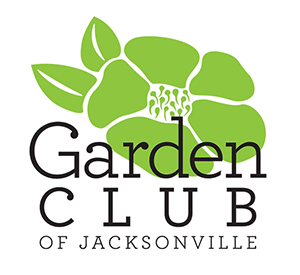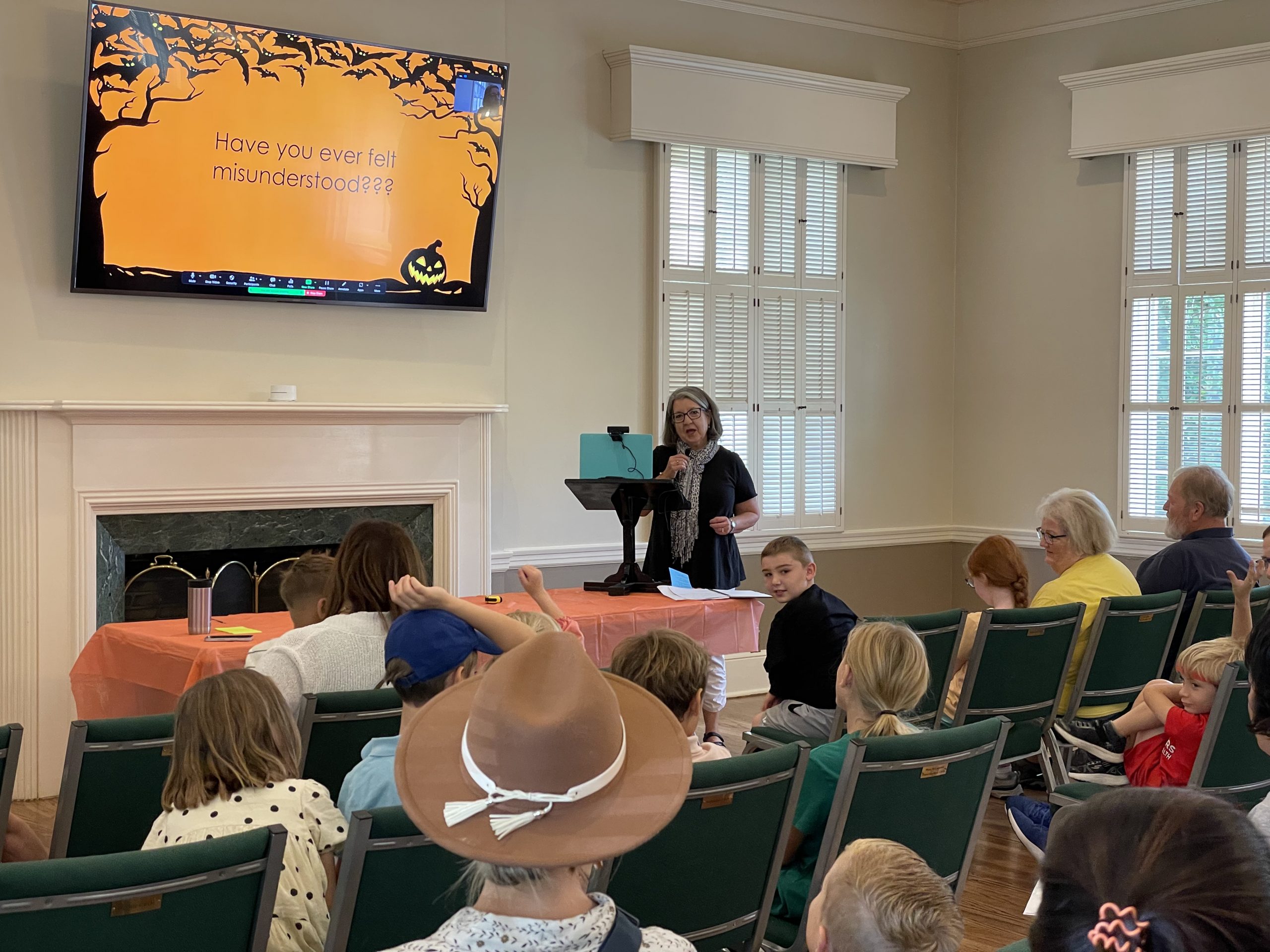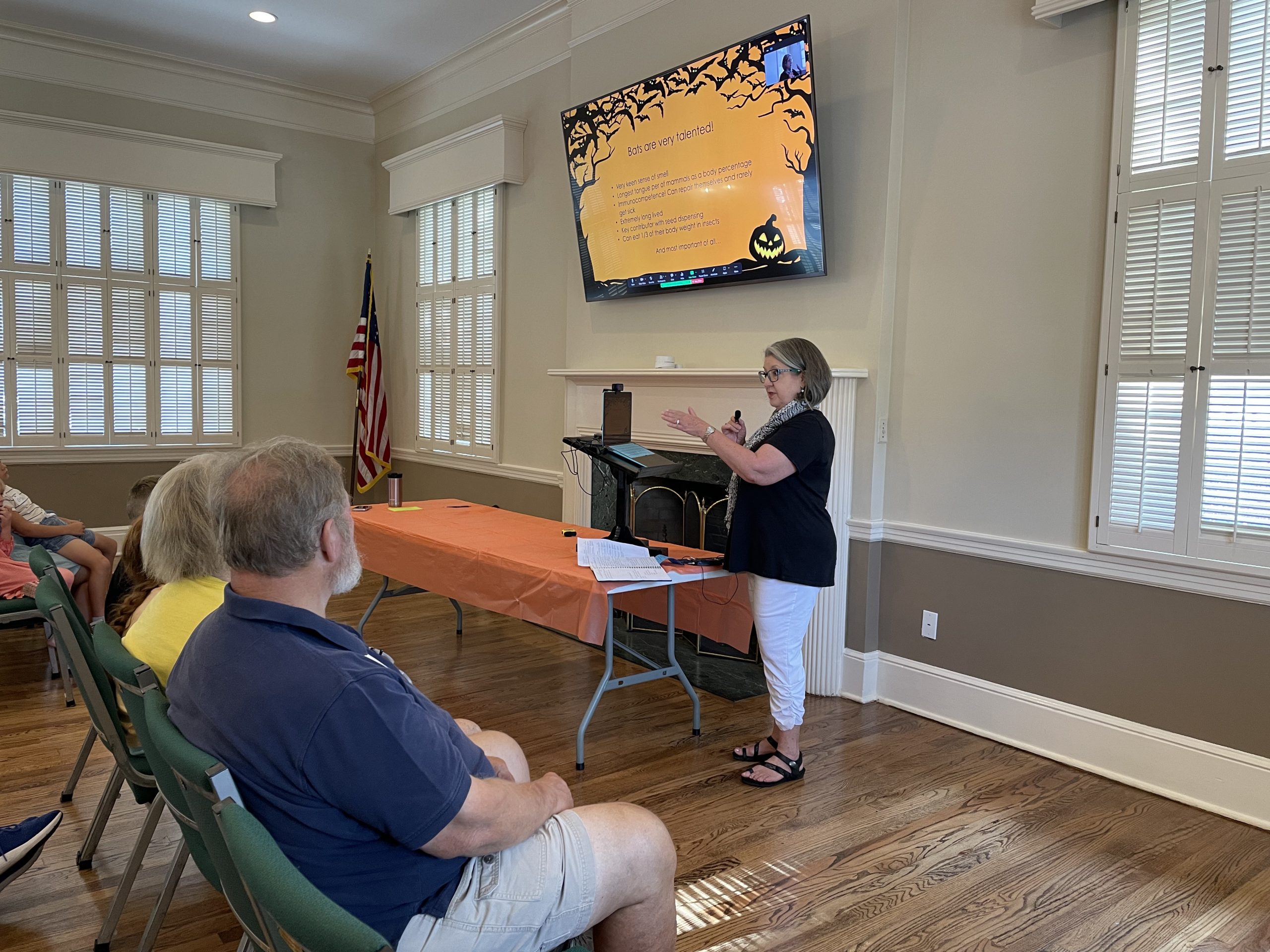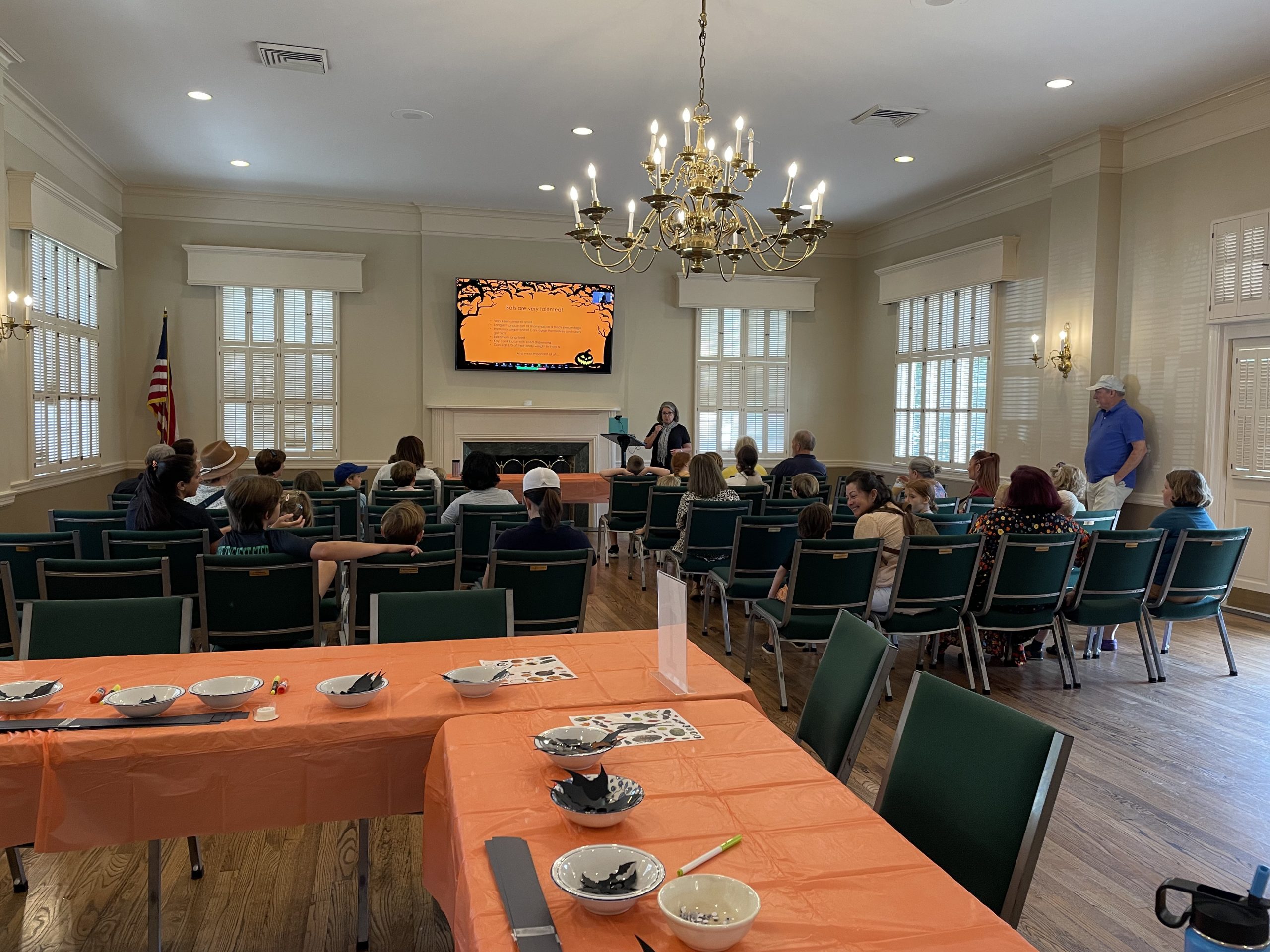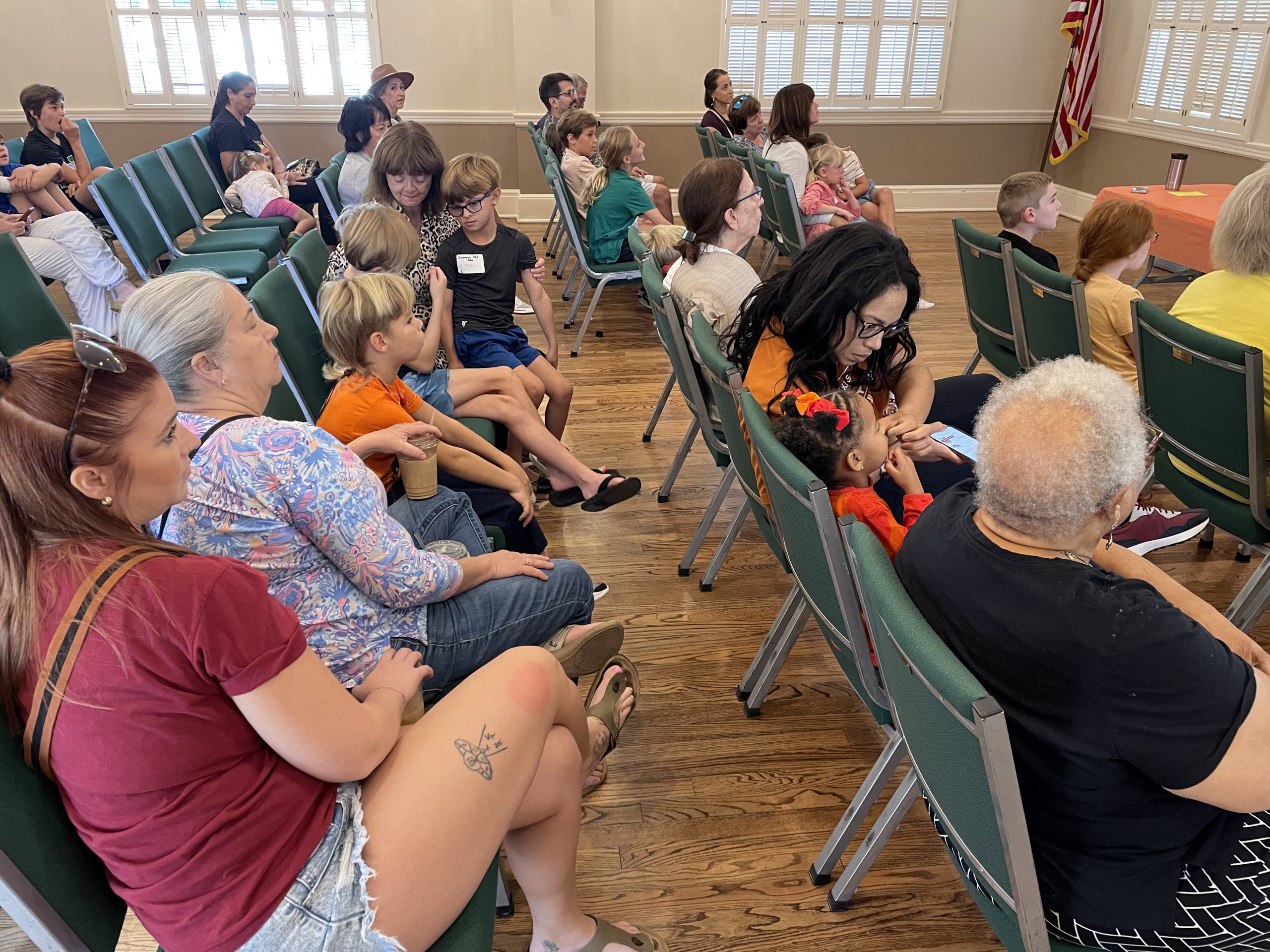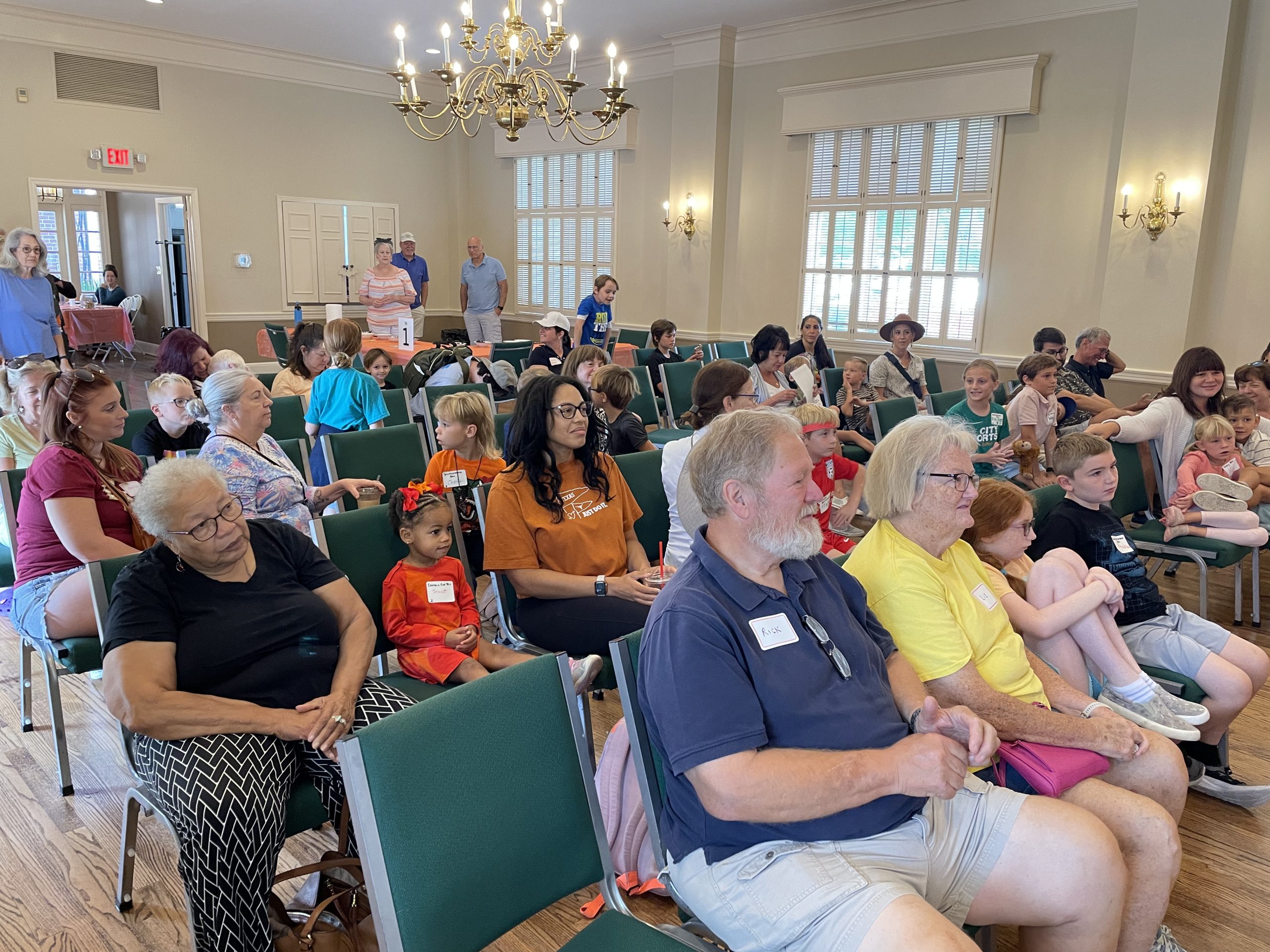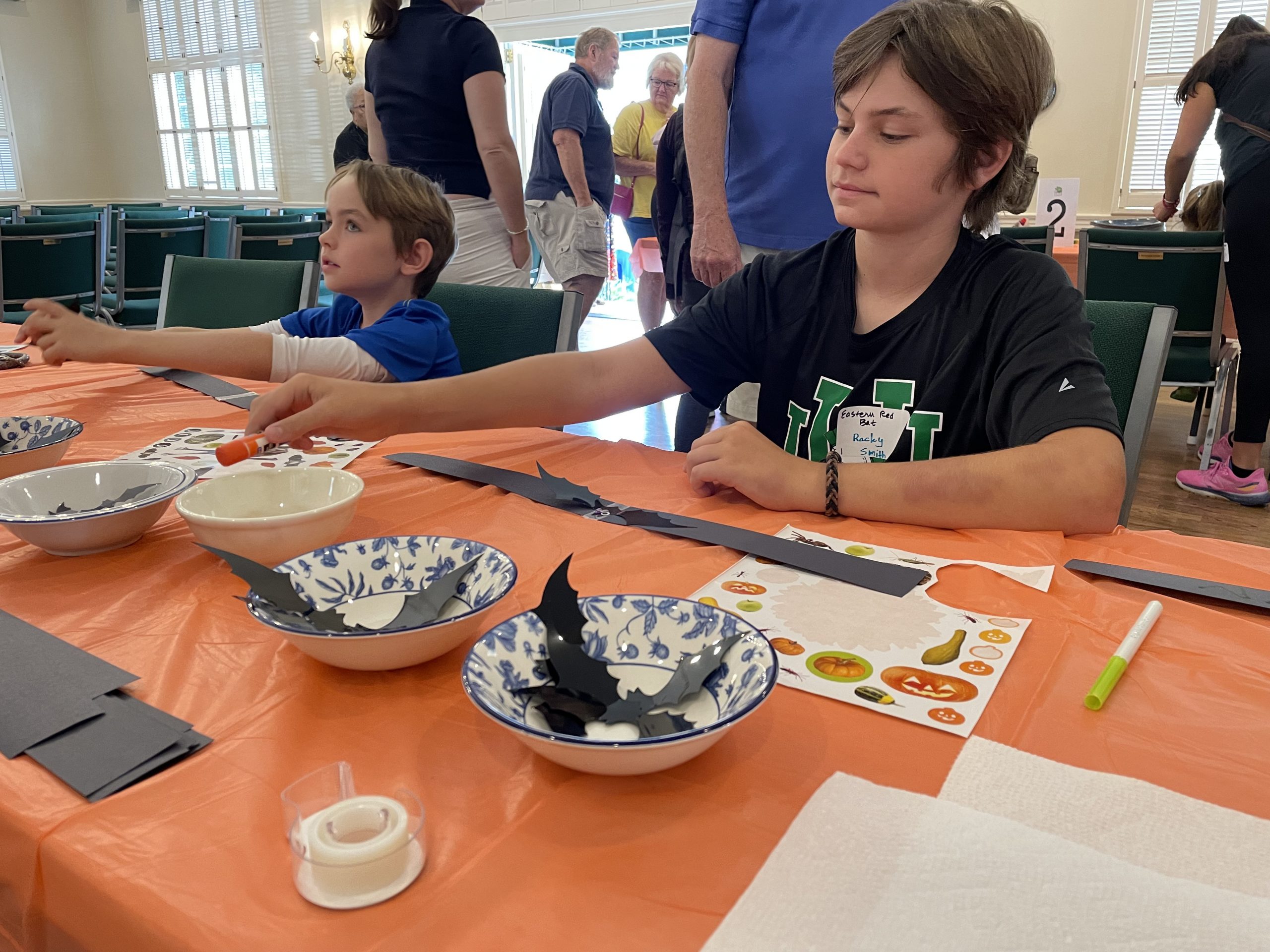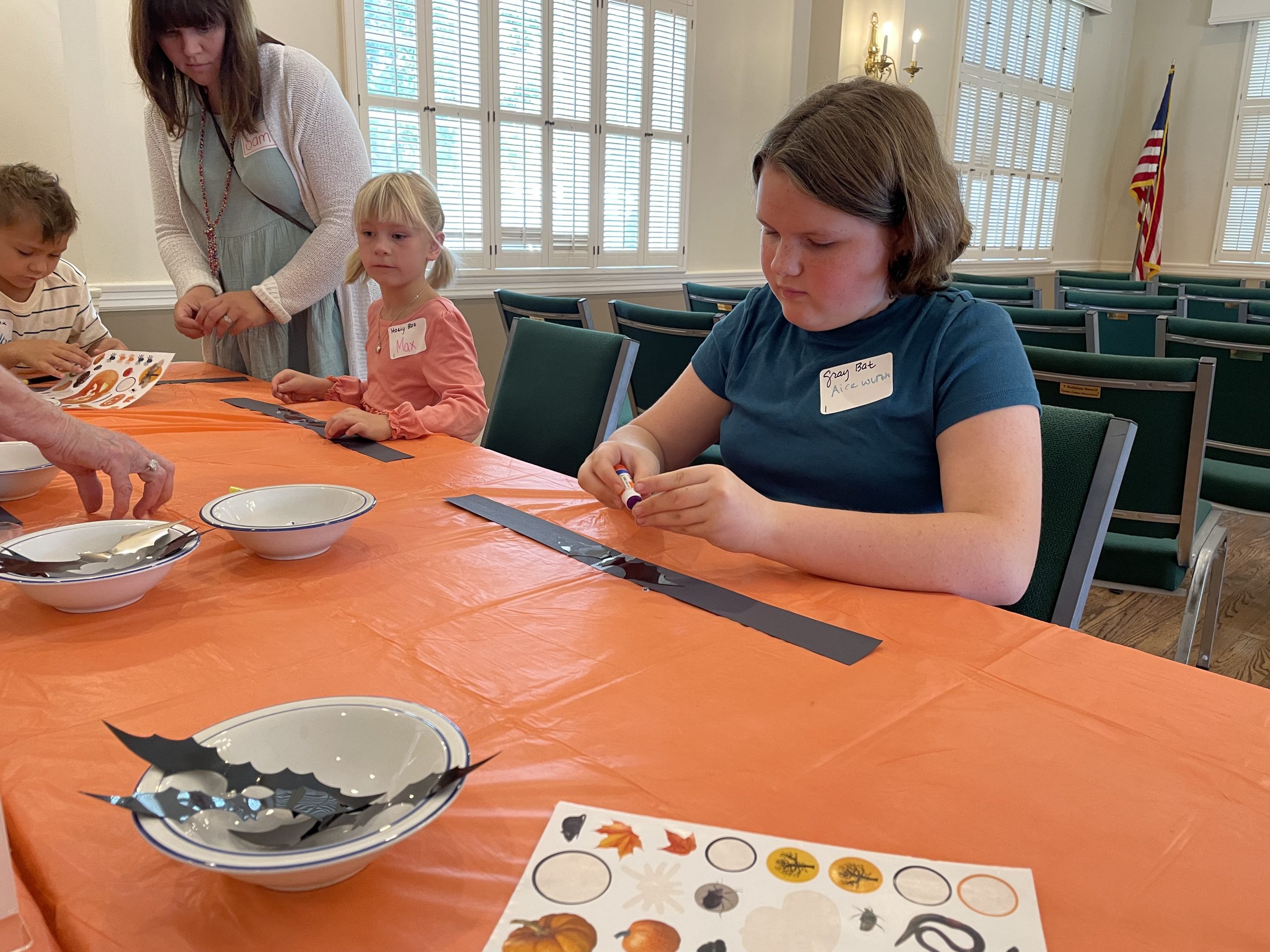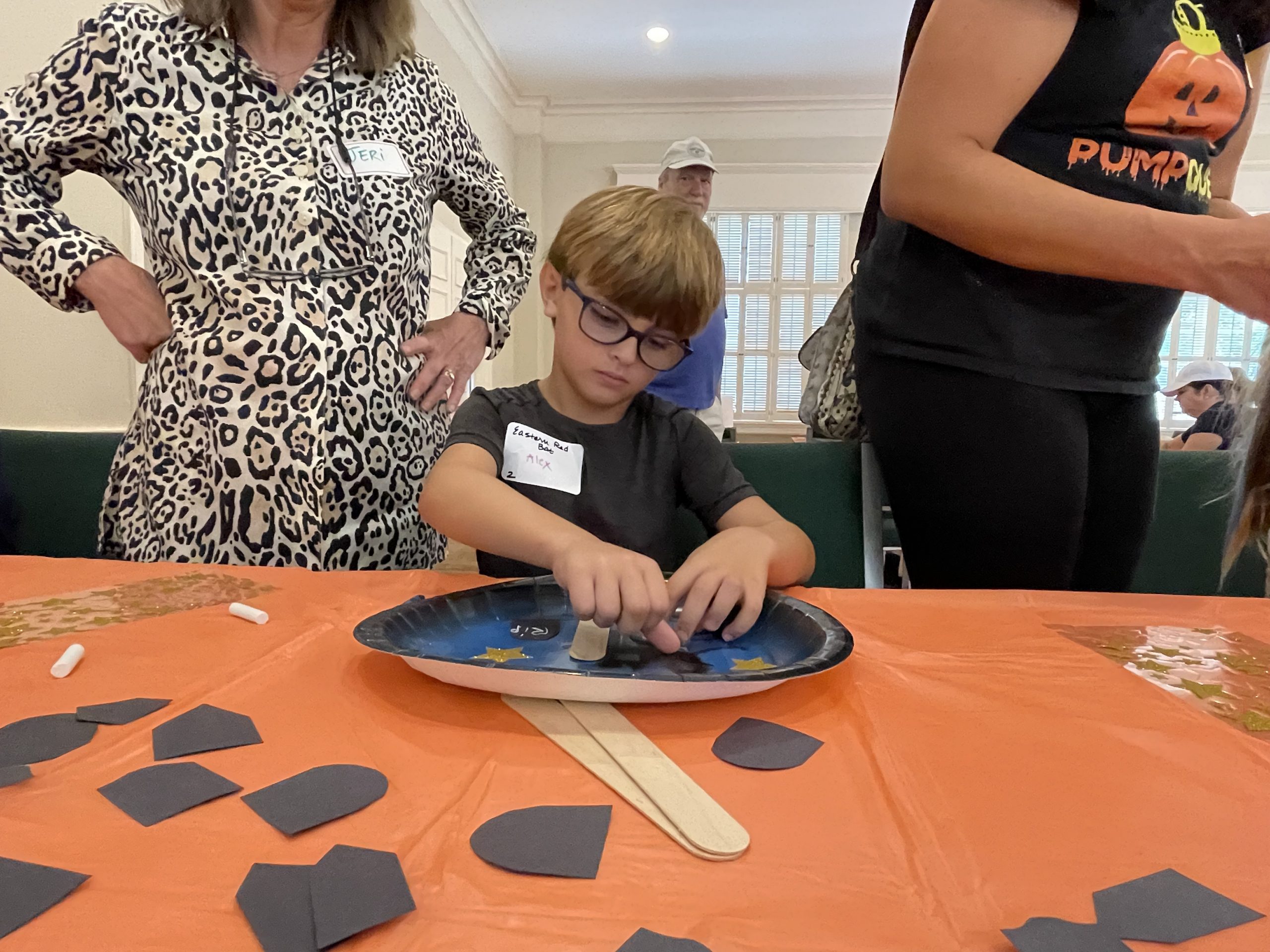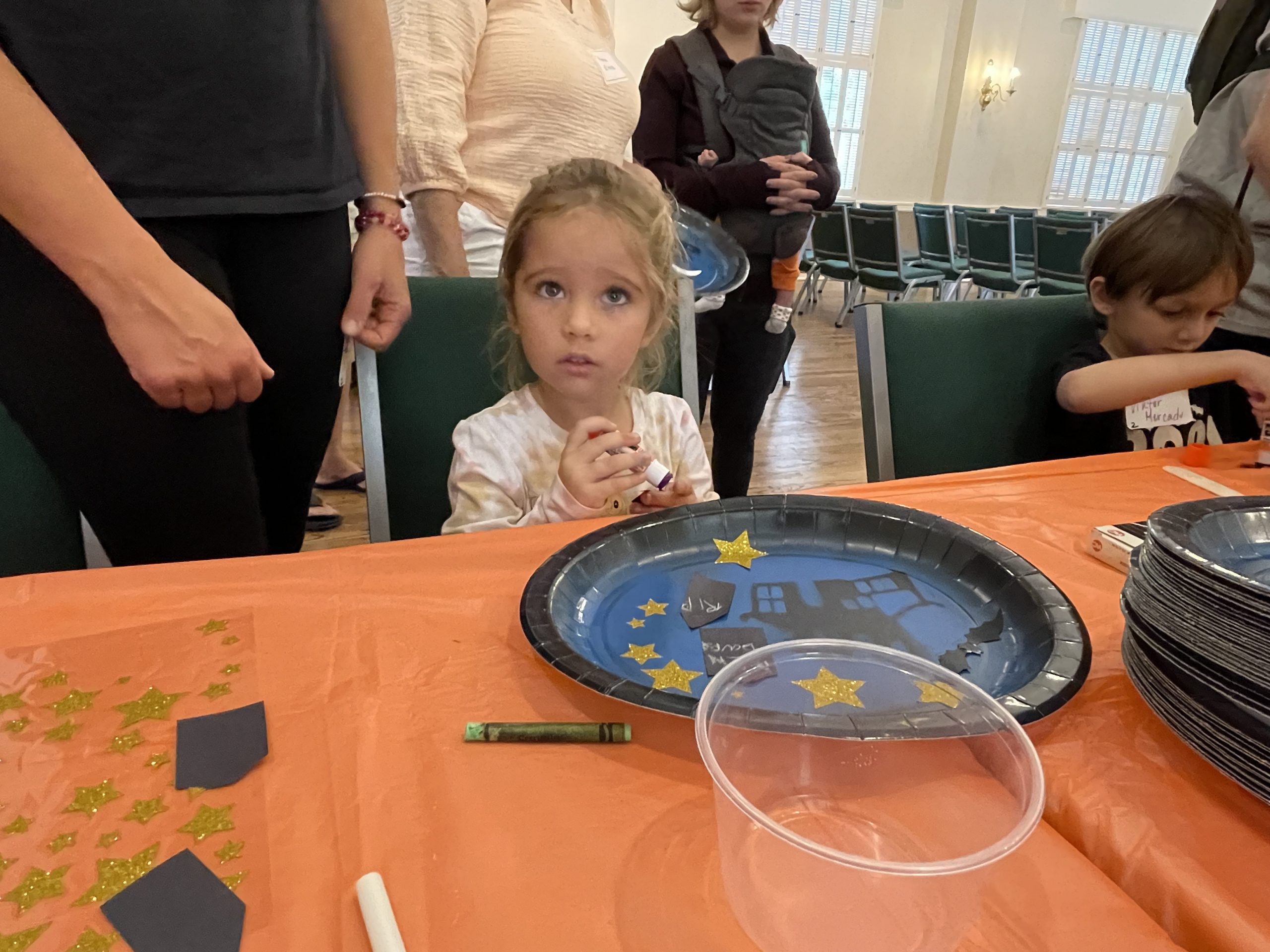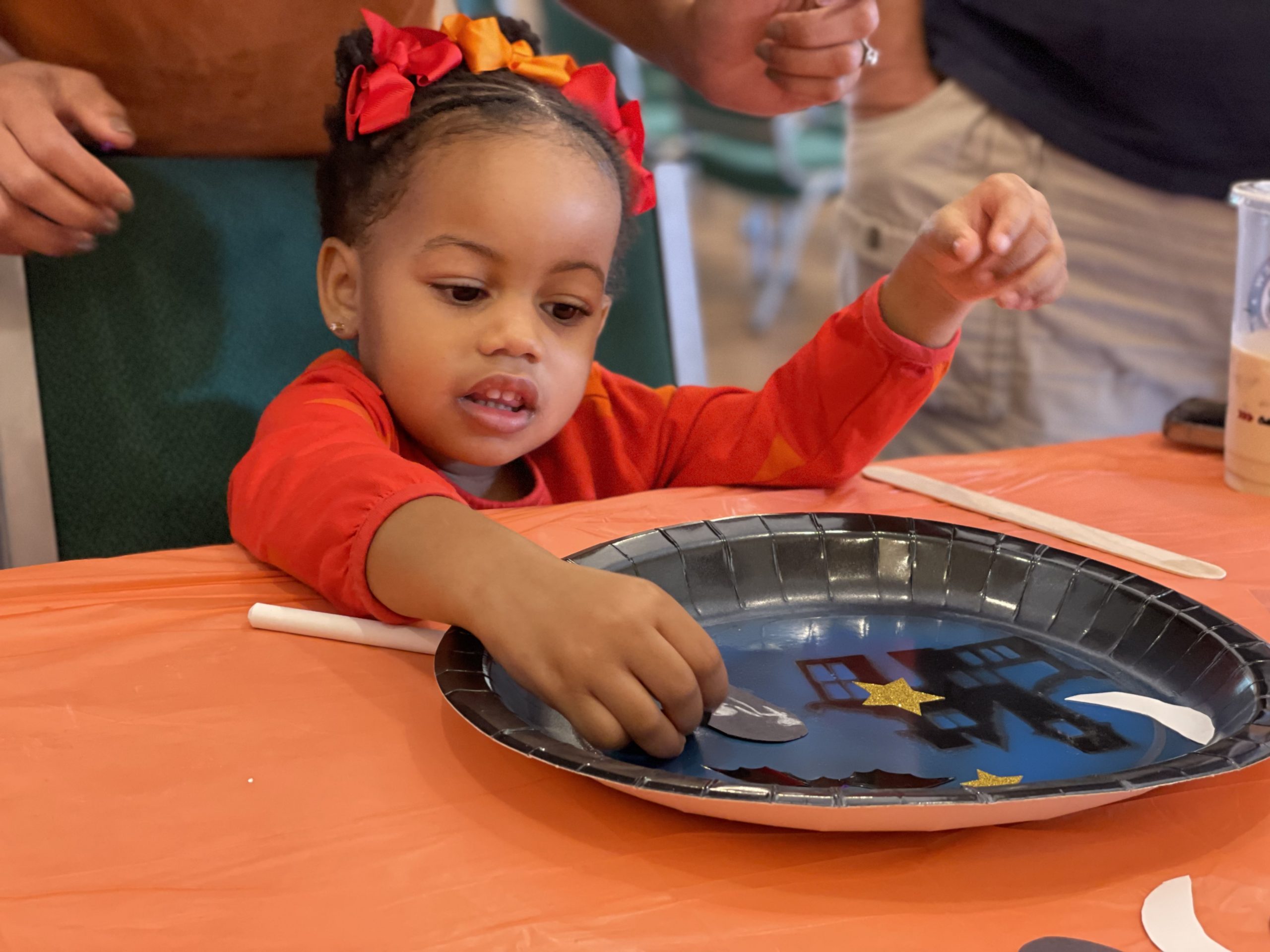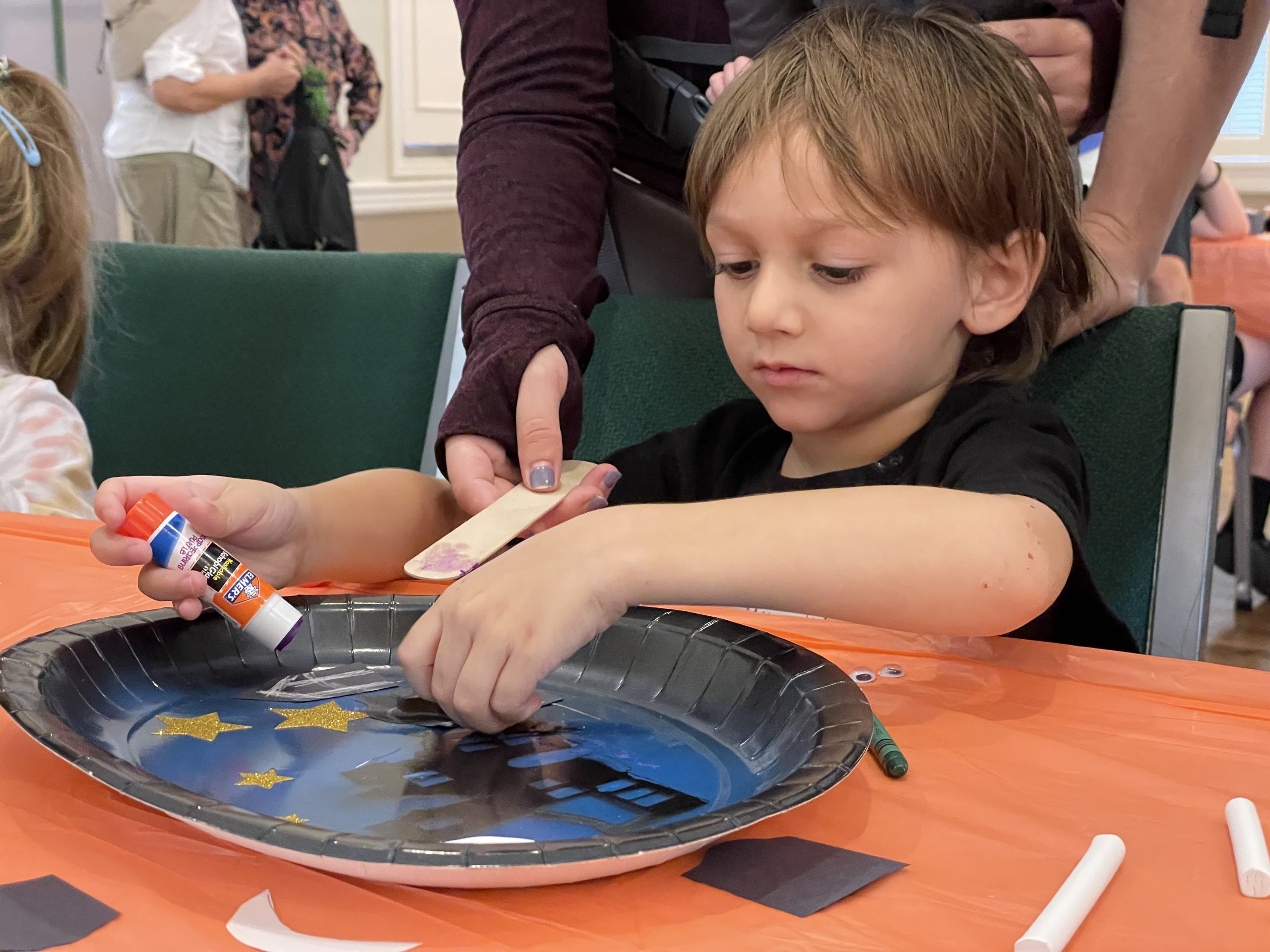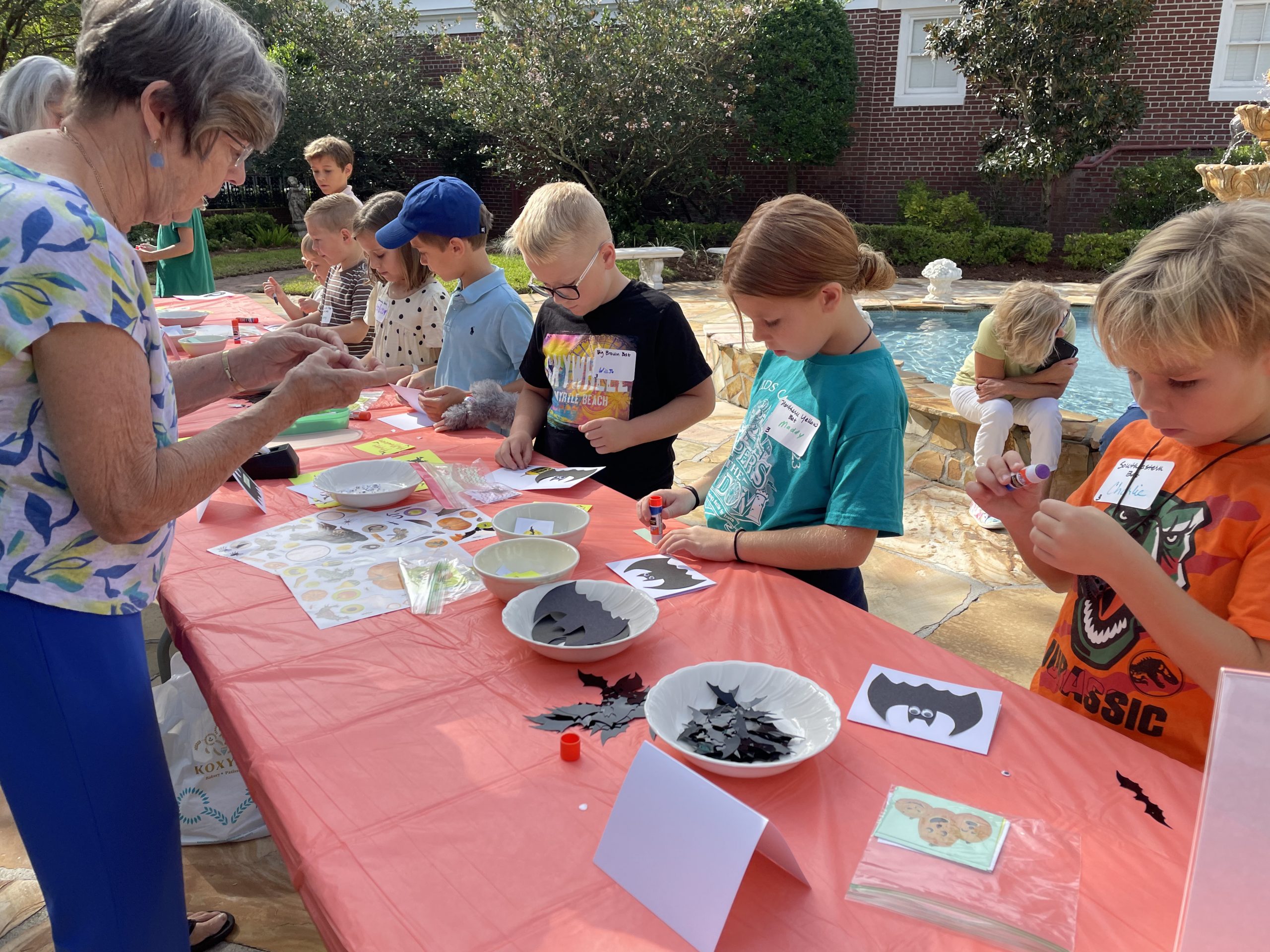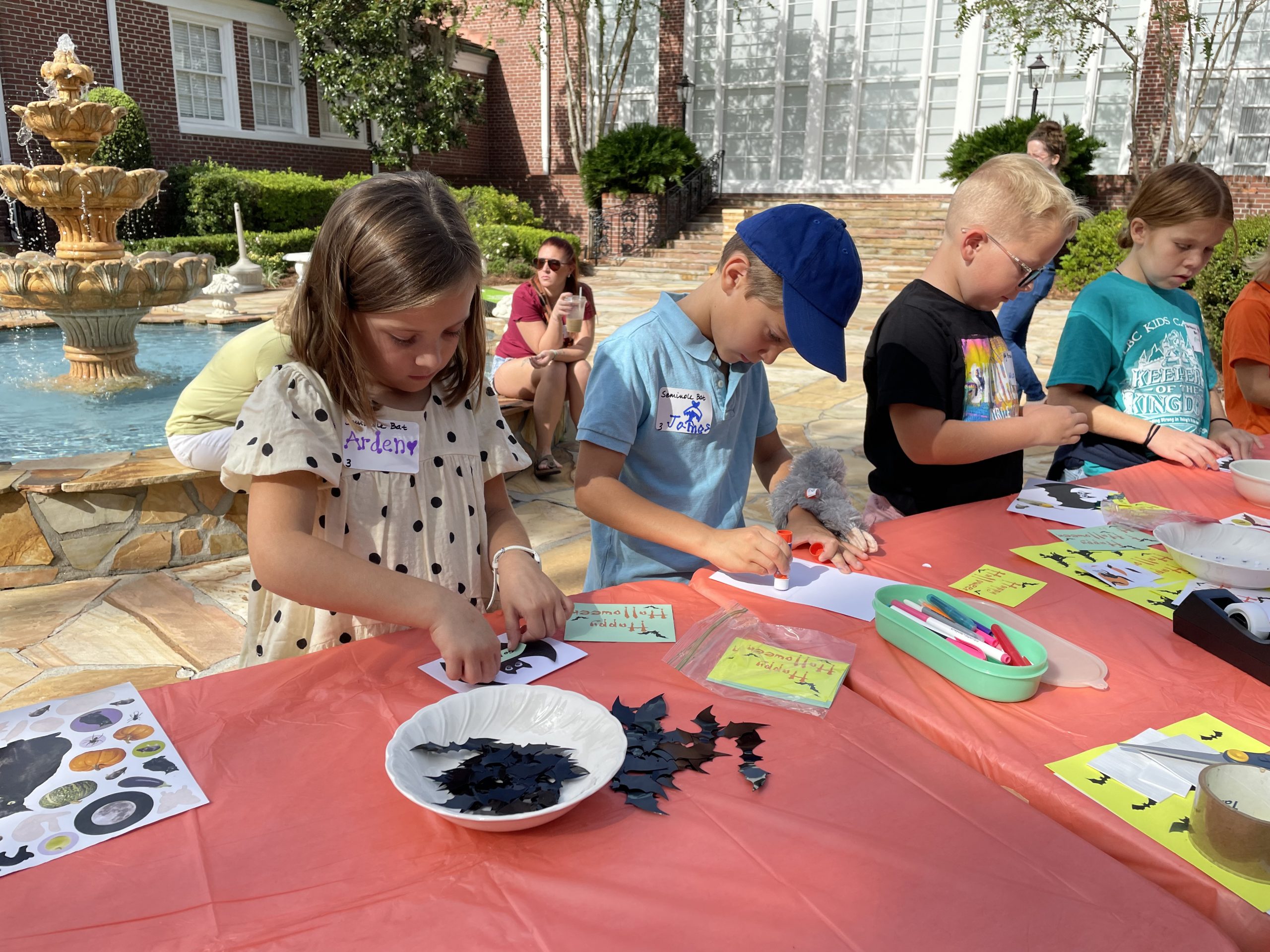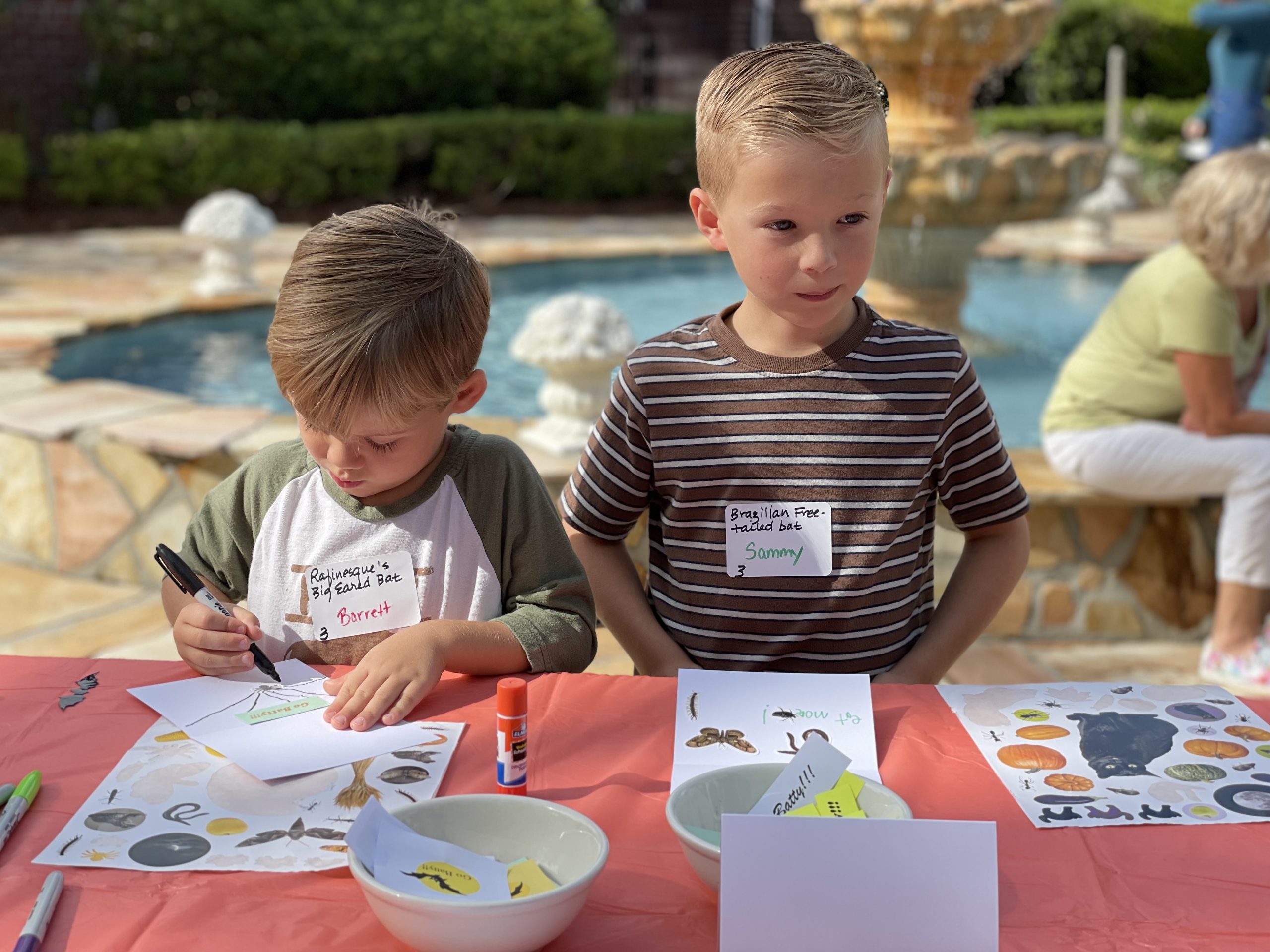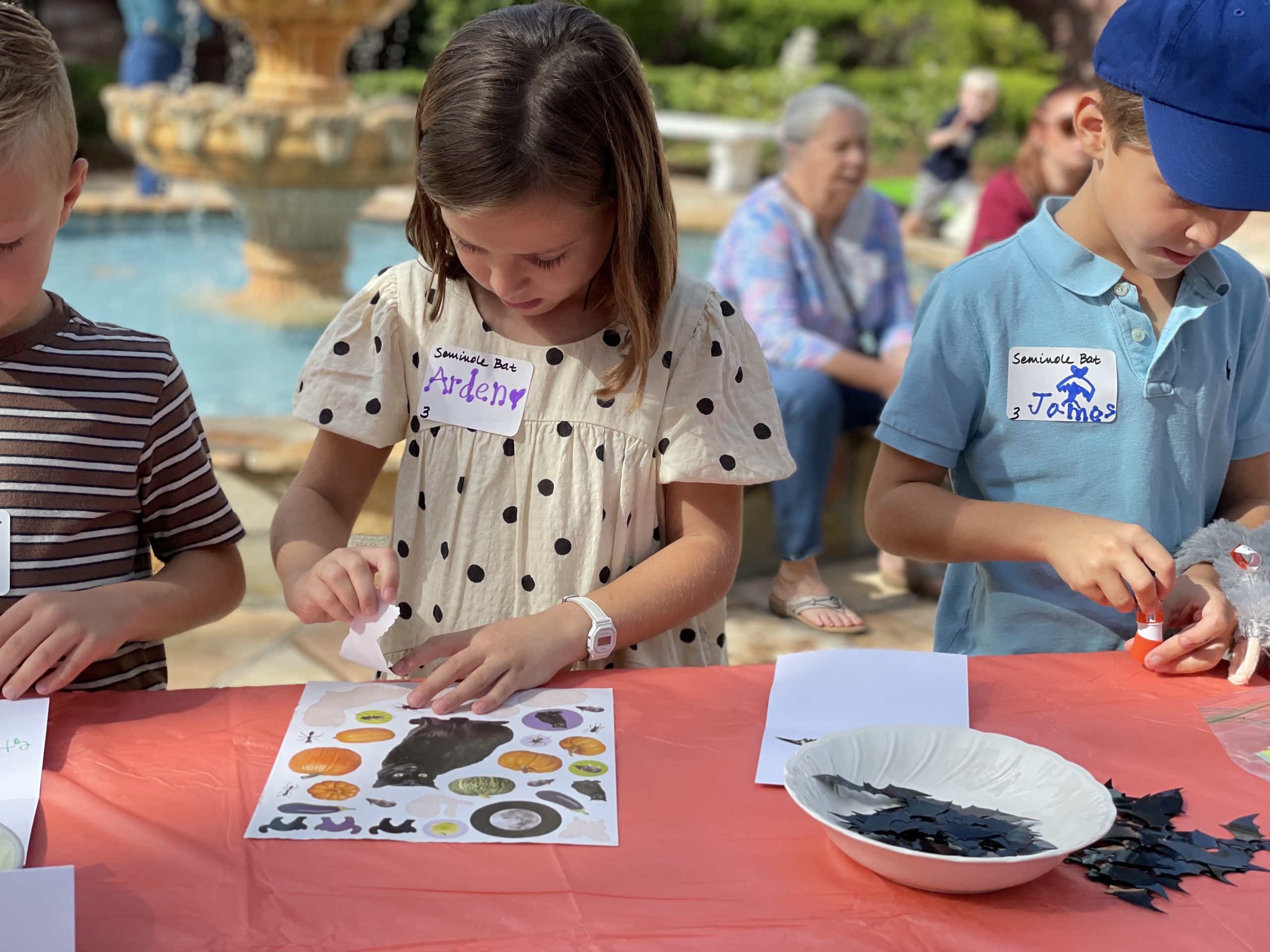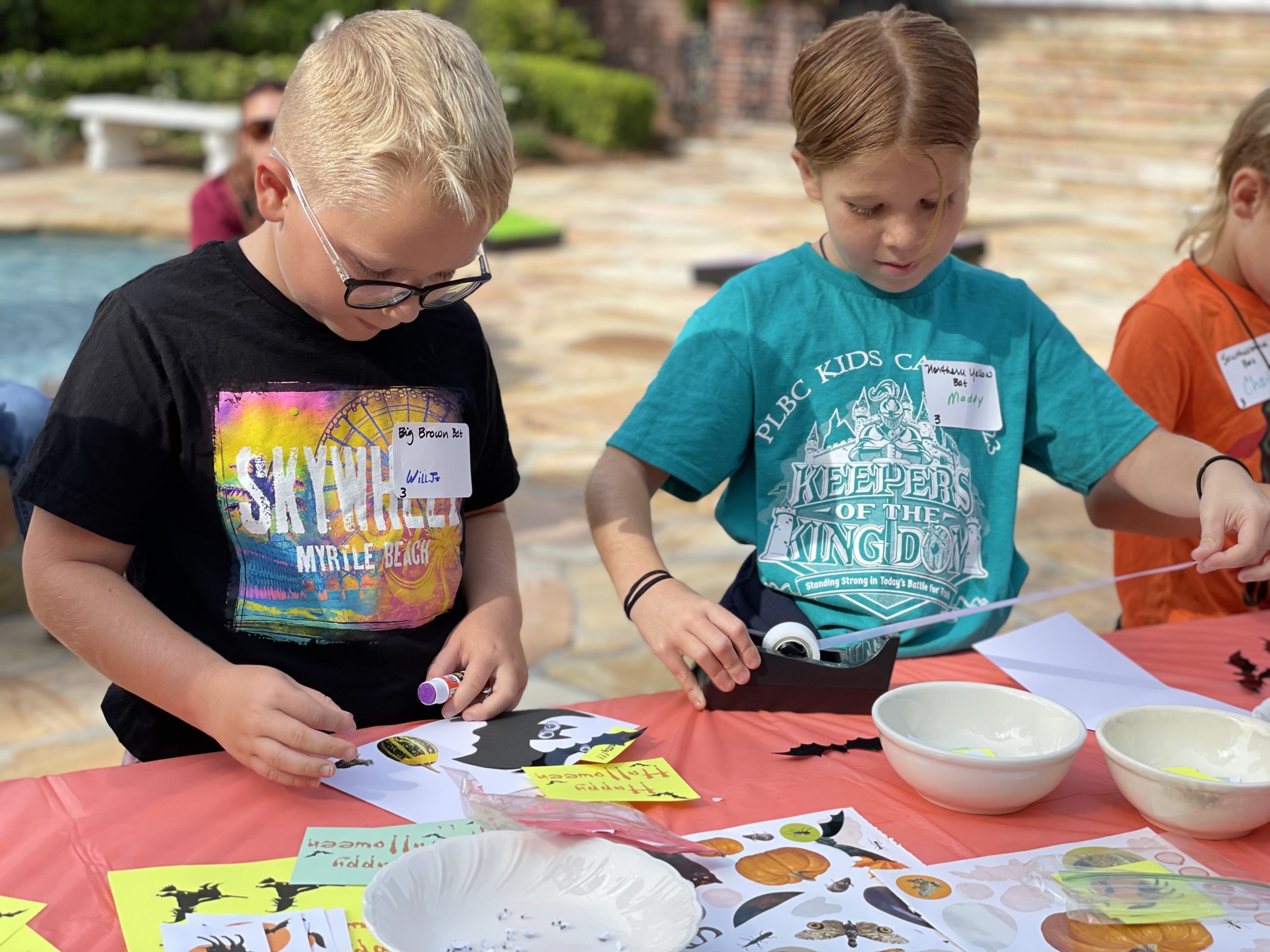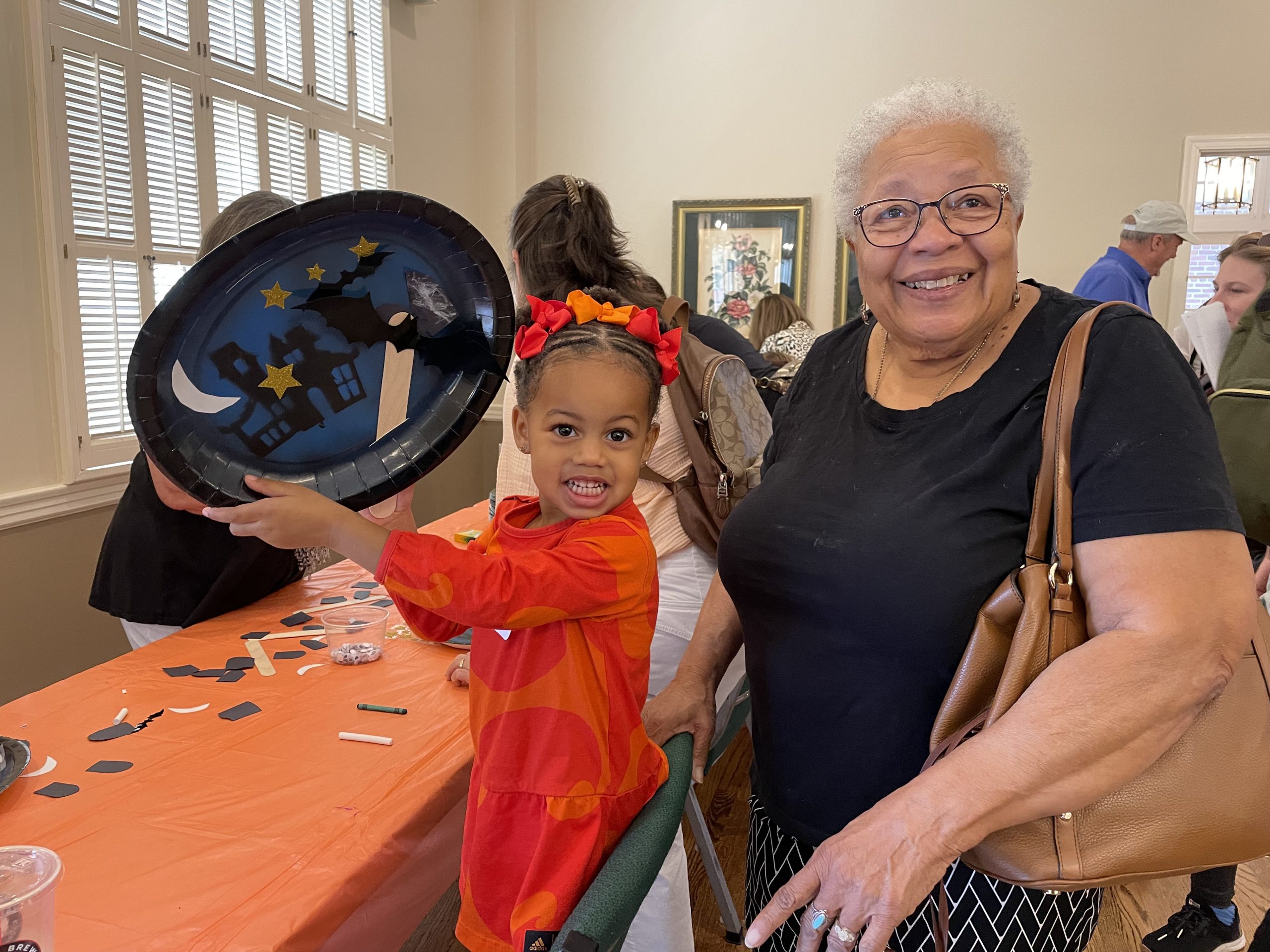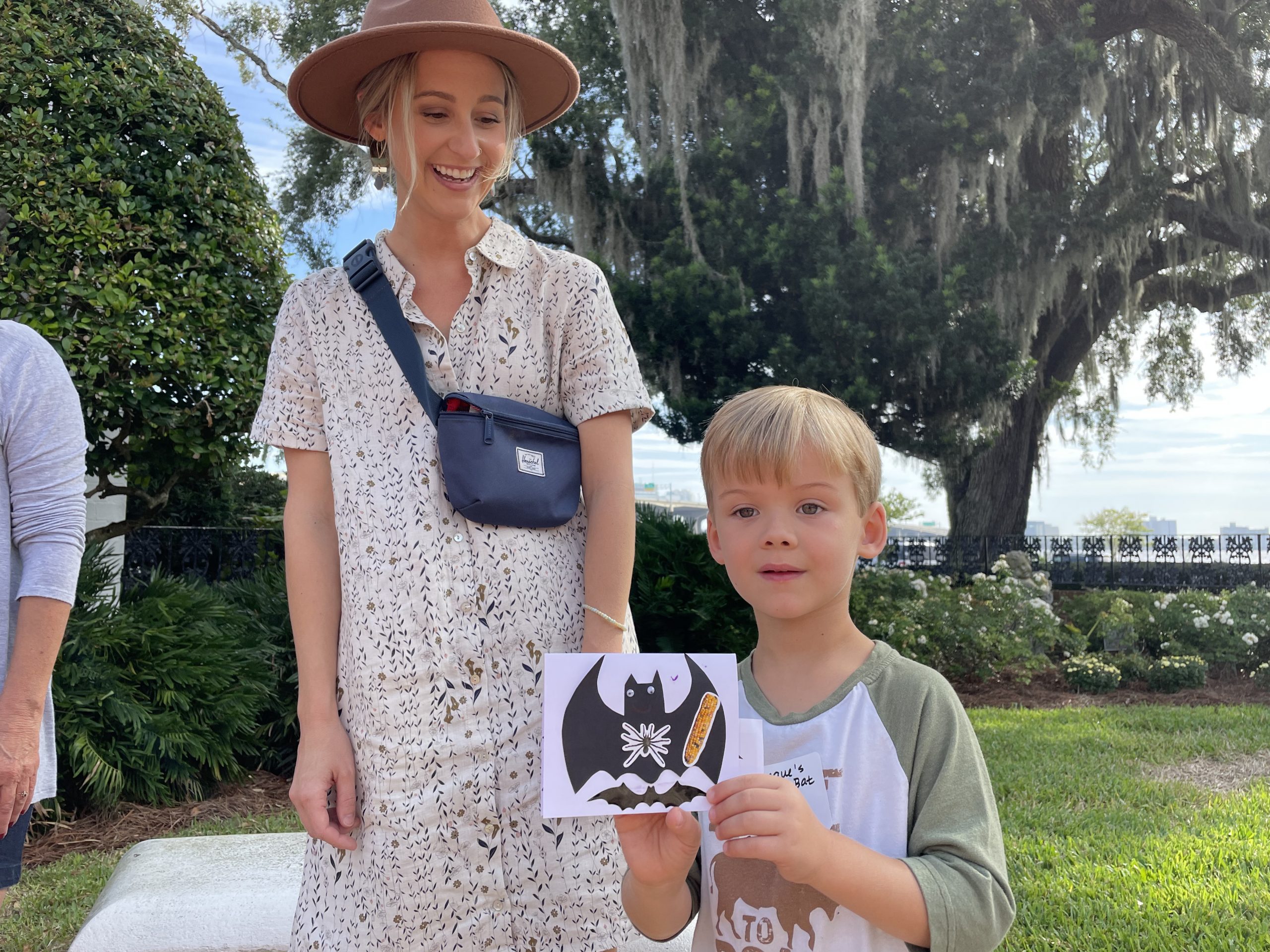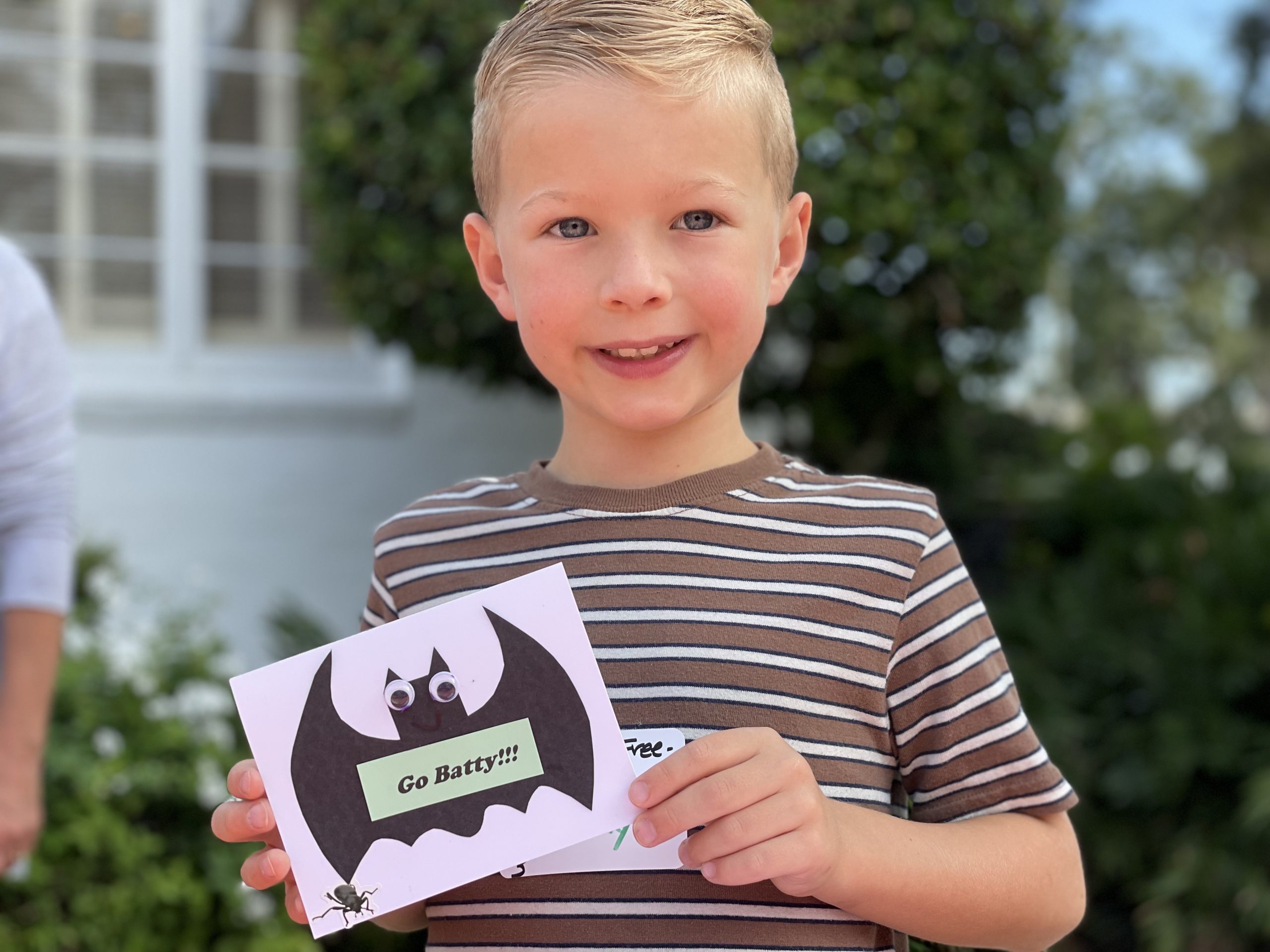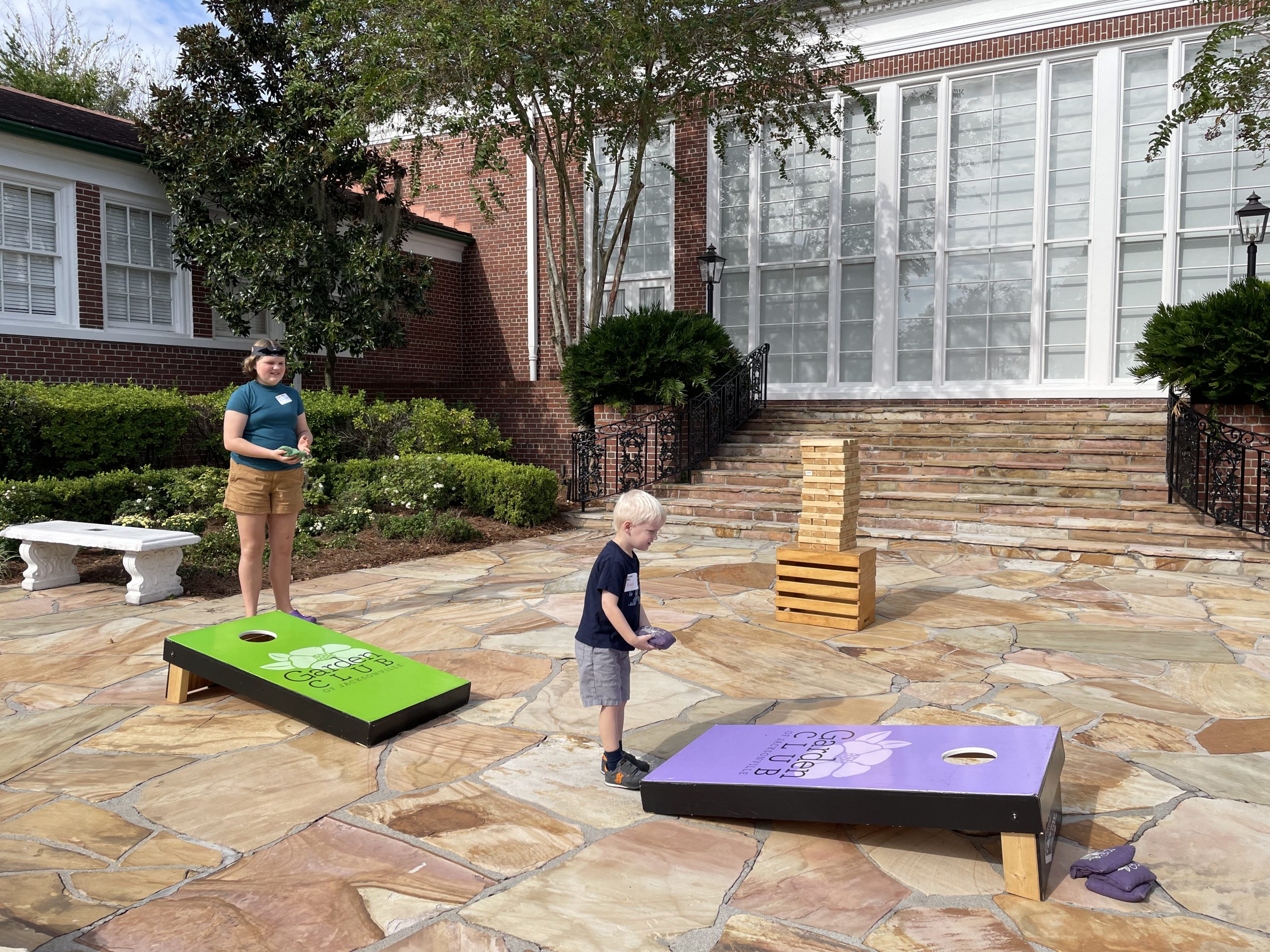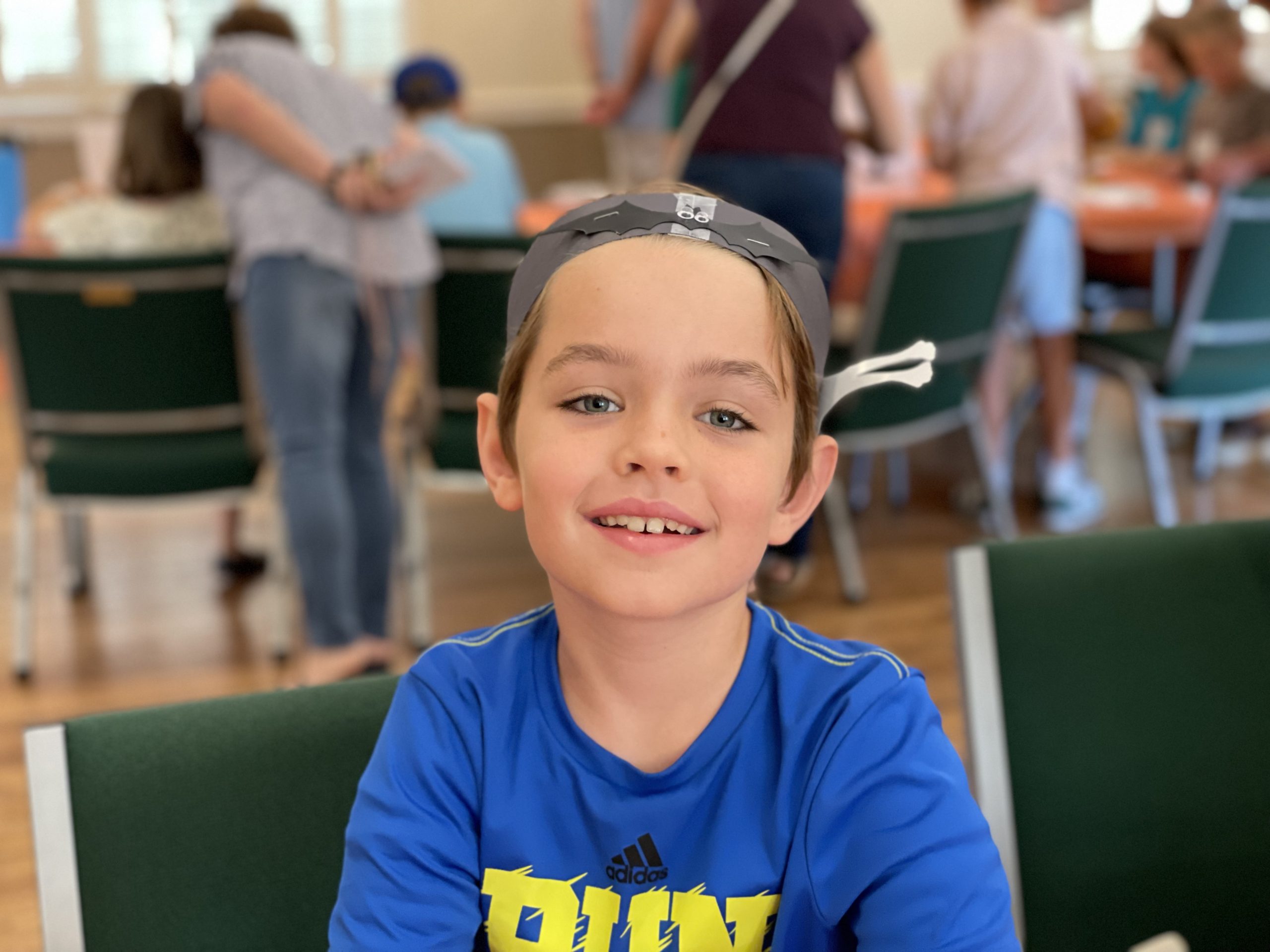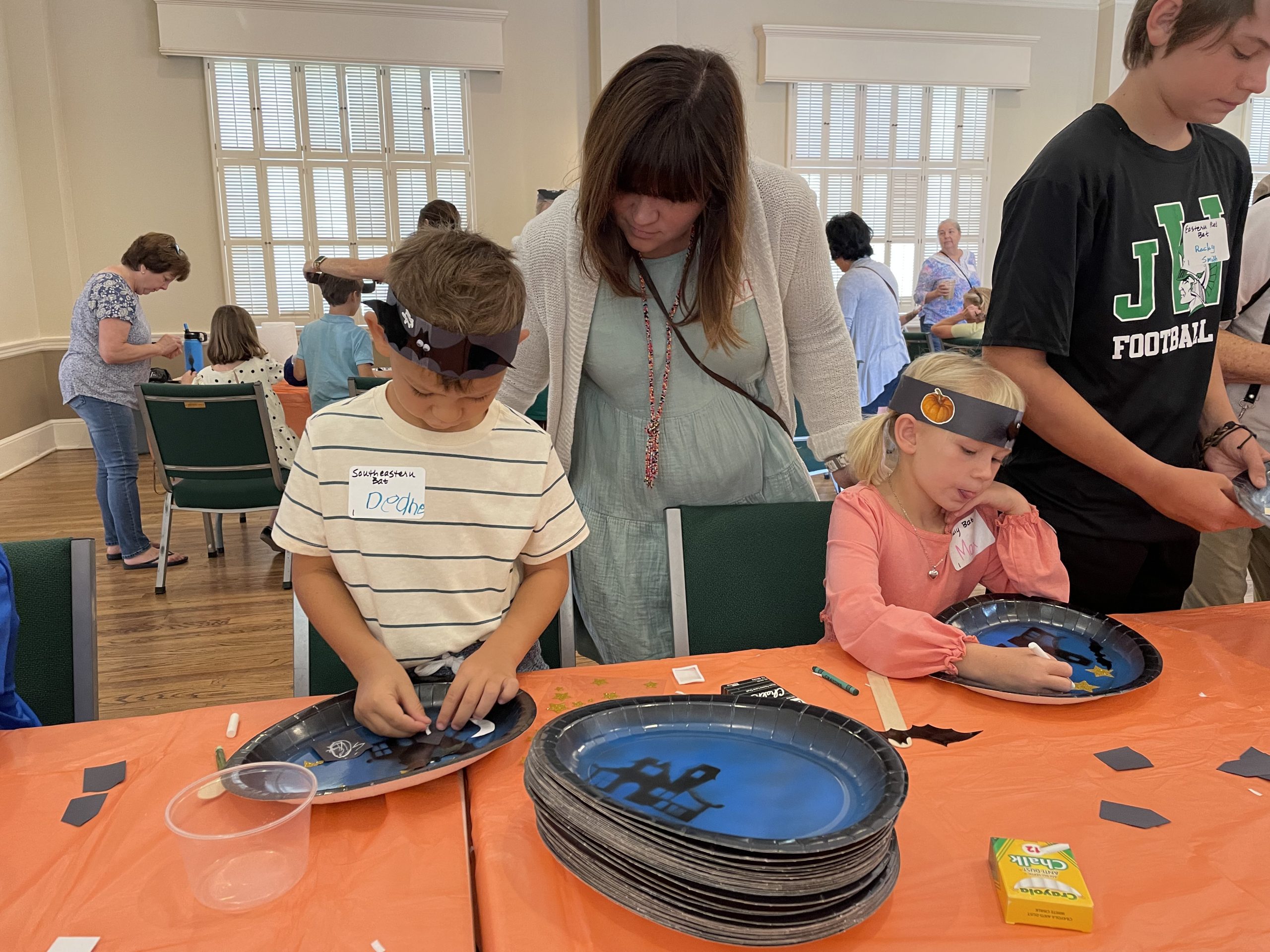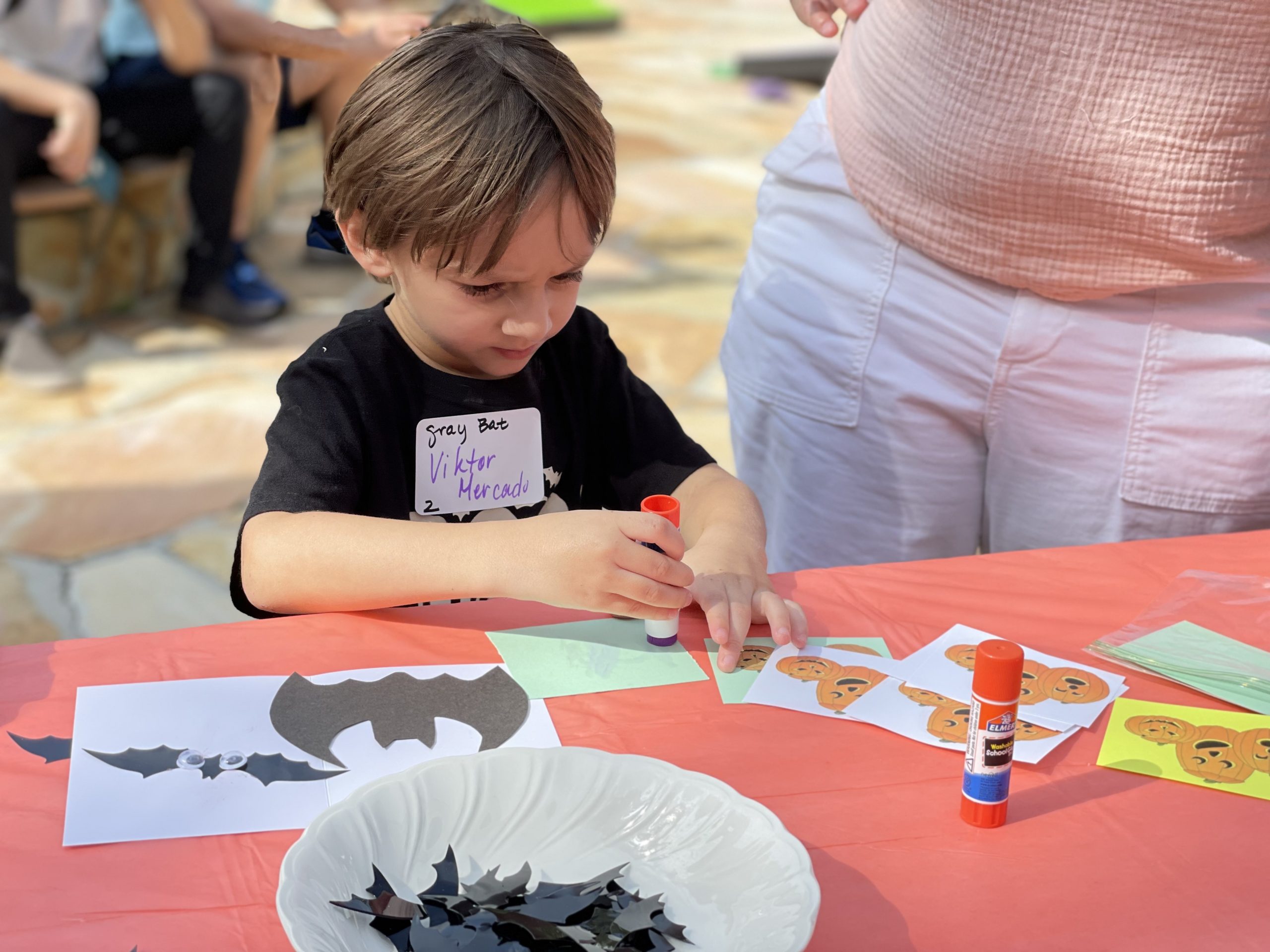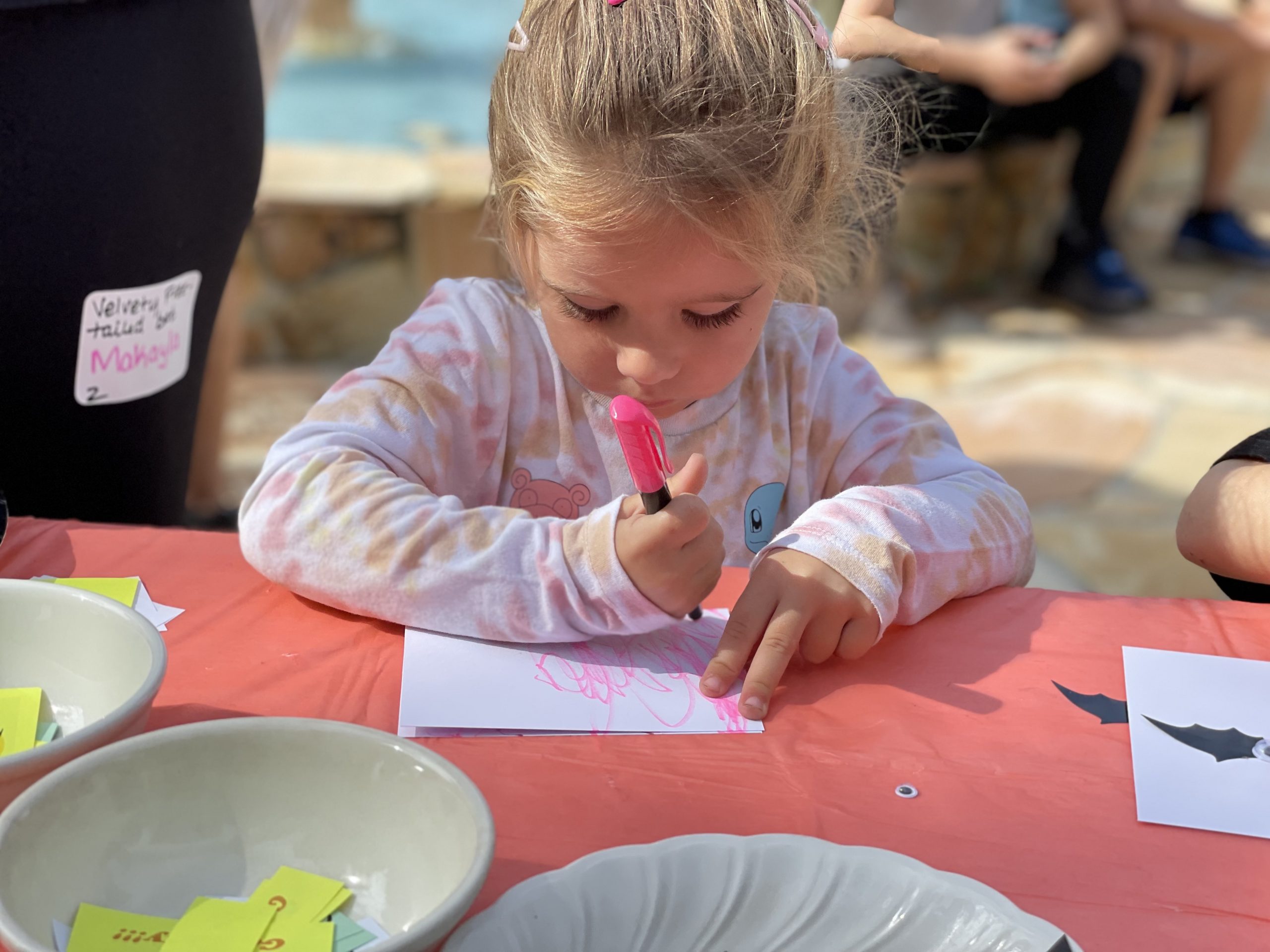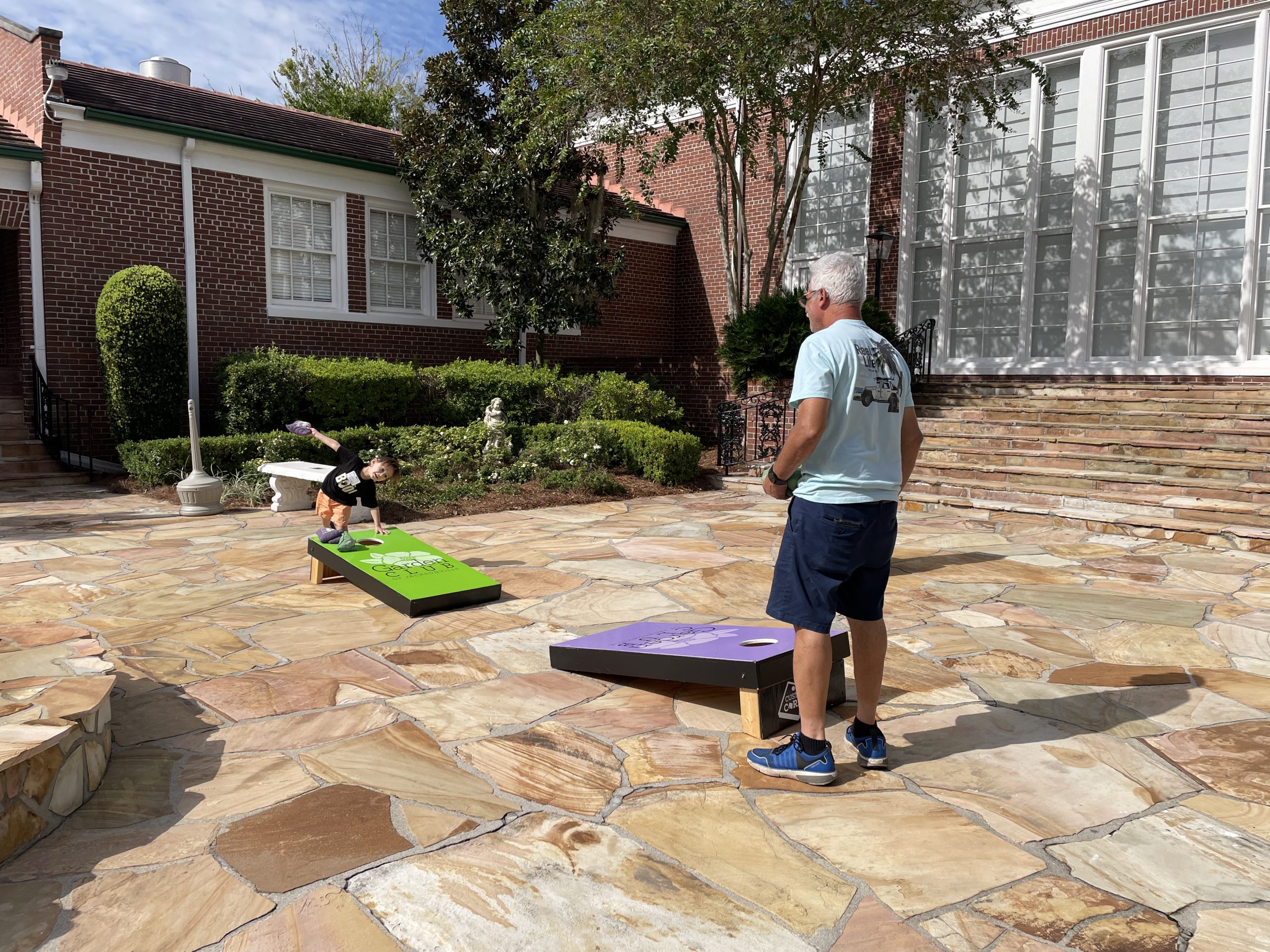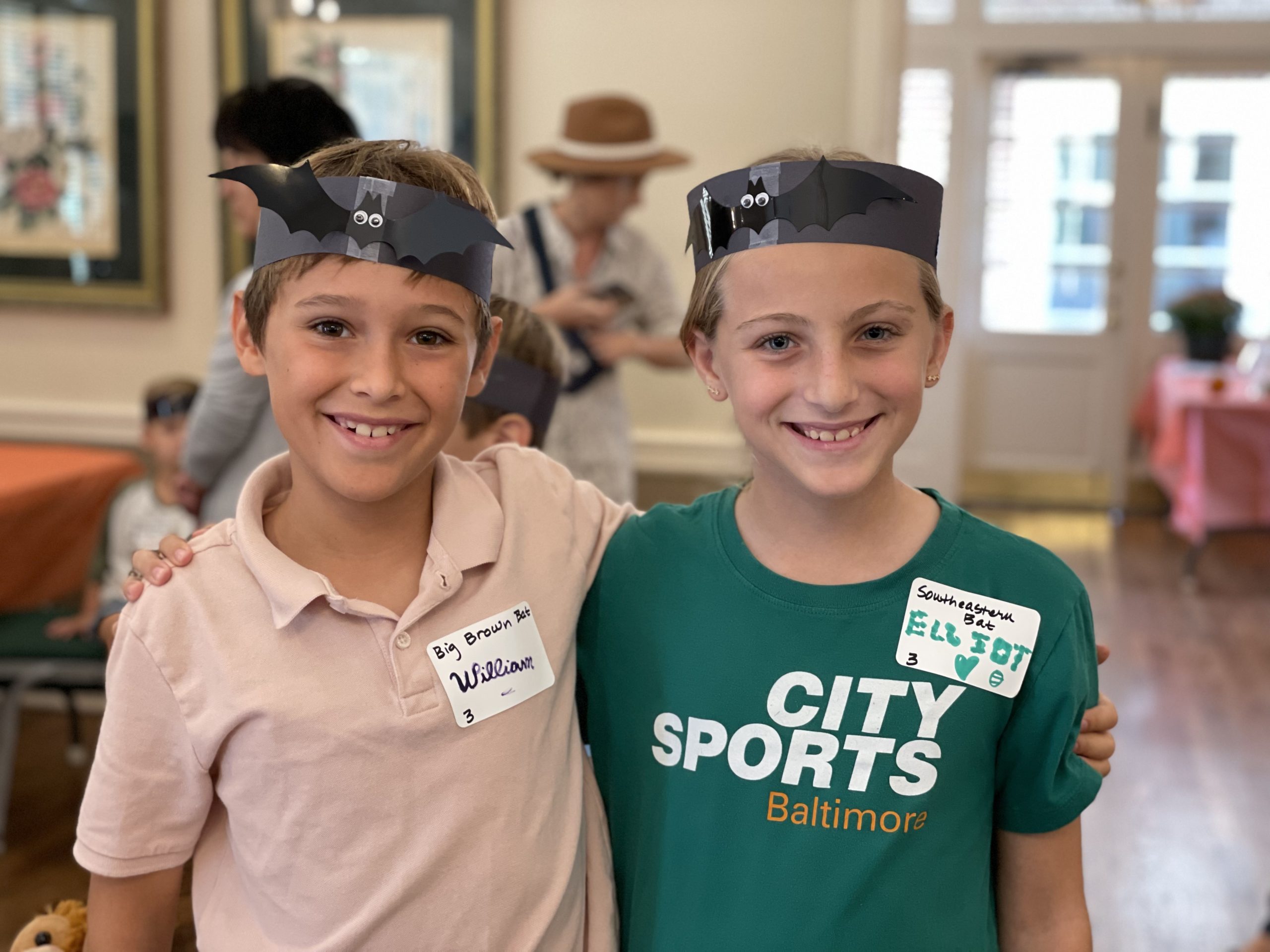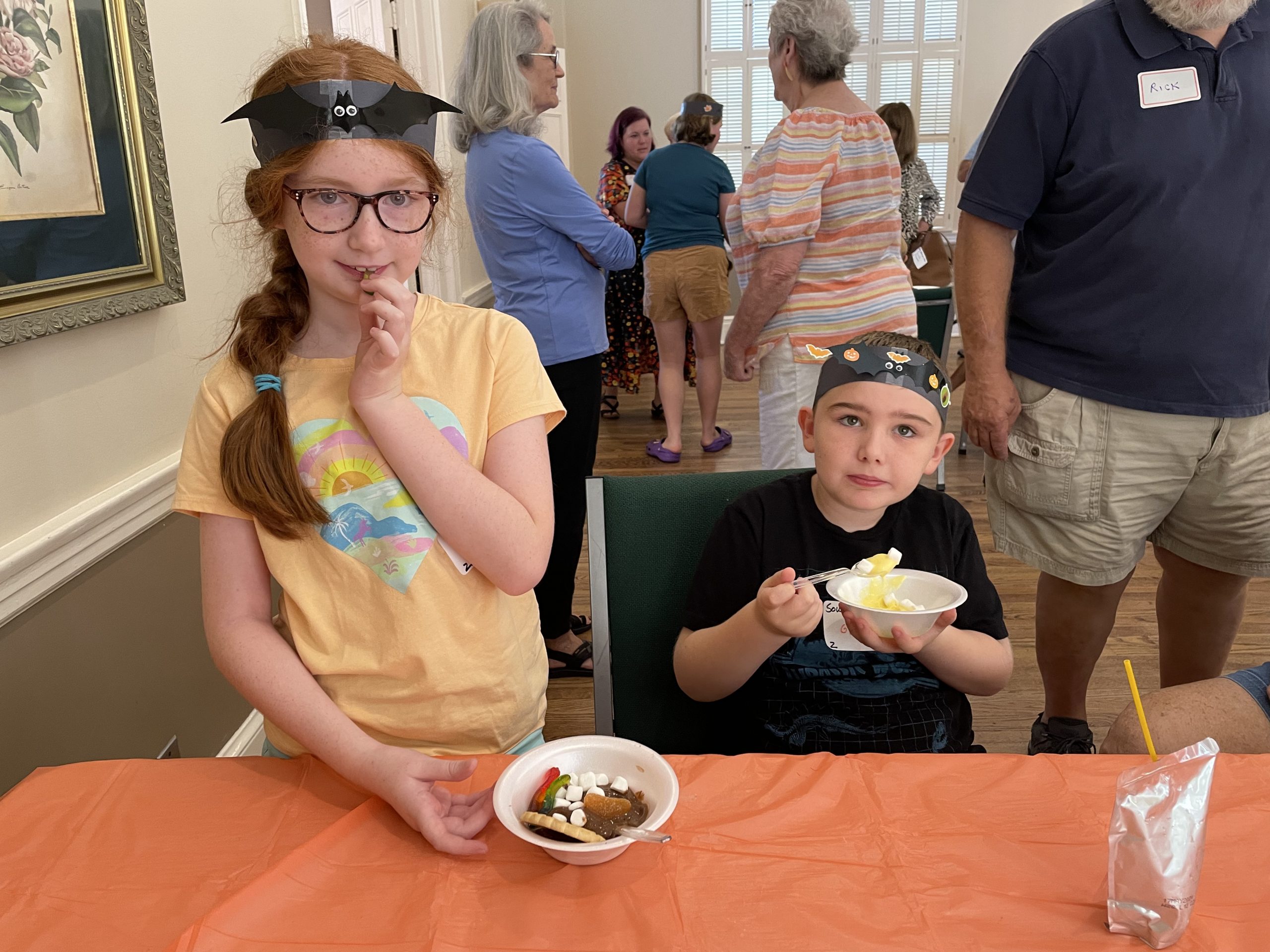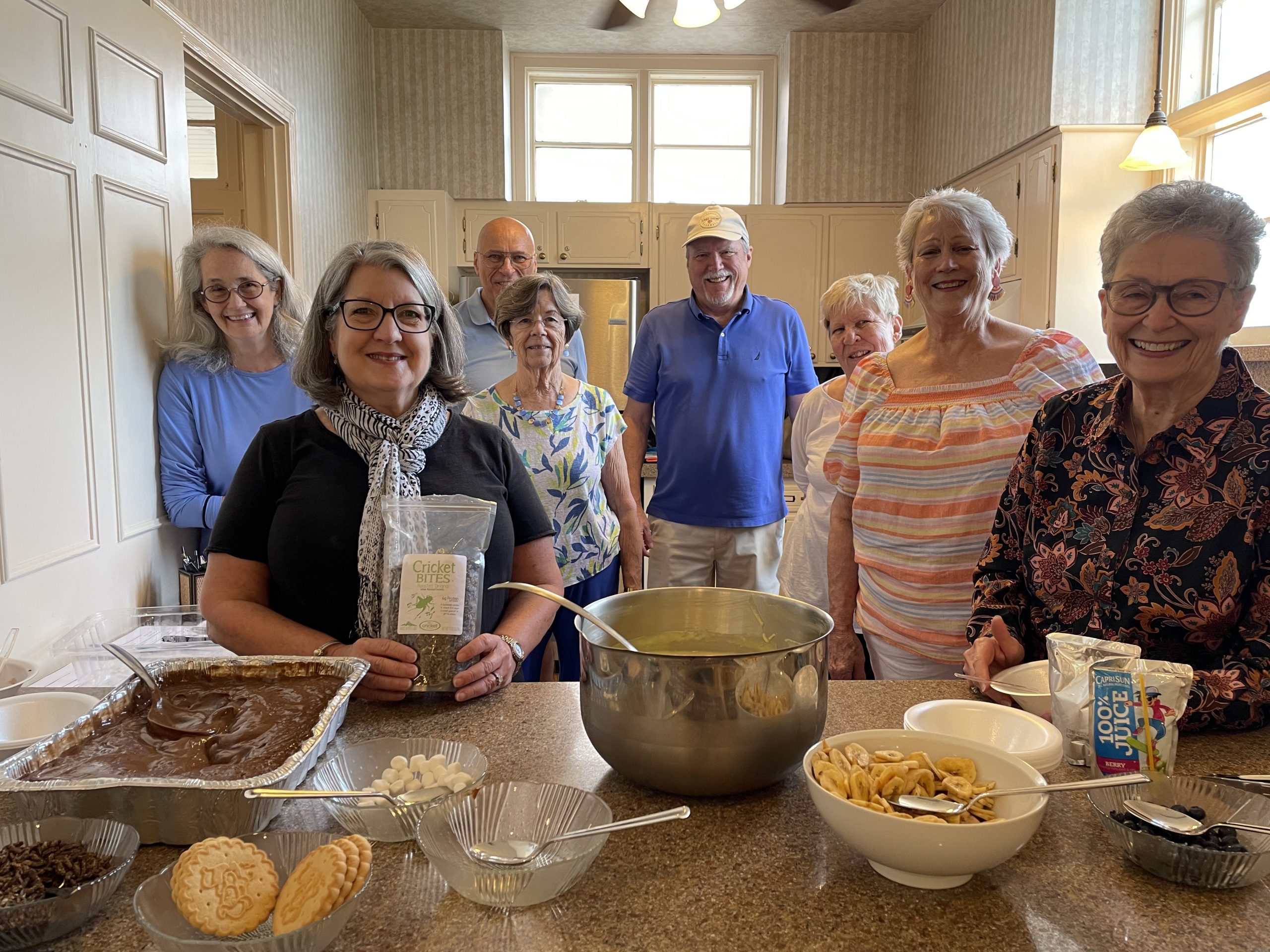On October 7 parents and their children went batty at the Garden Club of Jacksonville! After a presentation by Master Gardener Volunteer Cyndy Reynolds, president of the Ortega Forest Garden Circle, children had fun with a variety of bat-theme crafts and enjoyed a snack.
Did you know that bats use the same form of navigation to find their dinner as porpoises do? They are the only mammals that can fly and call their babies “pups.” Bats are such an impressive and important part of our ecosystem. Part of Cyndy’s presentation was showing a bat house. Why are bat houses important? You might be surprised: bats don’t always live in caves. Some bats spend winter months in caves, but most bats spend summers in trees, under bridges or in old buildings, where they give birth and rear young. A bat house mimics the space between bark and a tree trunk, helping bats find a home amid habitat loss.
The bats that call Florida home are:
- Big brown bat
- Tricolored bat (Eastern pipistrelle)
- Evening bat
- Gray myotis
- Northern yellow bat
- Seminole bat
- Velvety free-tailed bat
- Brazilian free-tailed bat
- Eastern red bat
- Florida bonneted bat
- Hoary bat
- Rafinesque’s big-eared bat
- Southeastern myotis
Budding Gardeners: Going Batty was sponsored and presented by the Ortega Forest Garden Circle, which is part of the Garden Club of Jacksonville.
Budding Gardeners is aimed at children in grades 1-6 to discover gardening, conservation, and wildlife through interactive programs, crafts, and outdoor projects. Children and their parents or caregivers collaborate during a morning of healthy and fun activities.
